PHYSICAL AND ORGANOLEPTIC CHARACTERISTICS
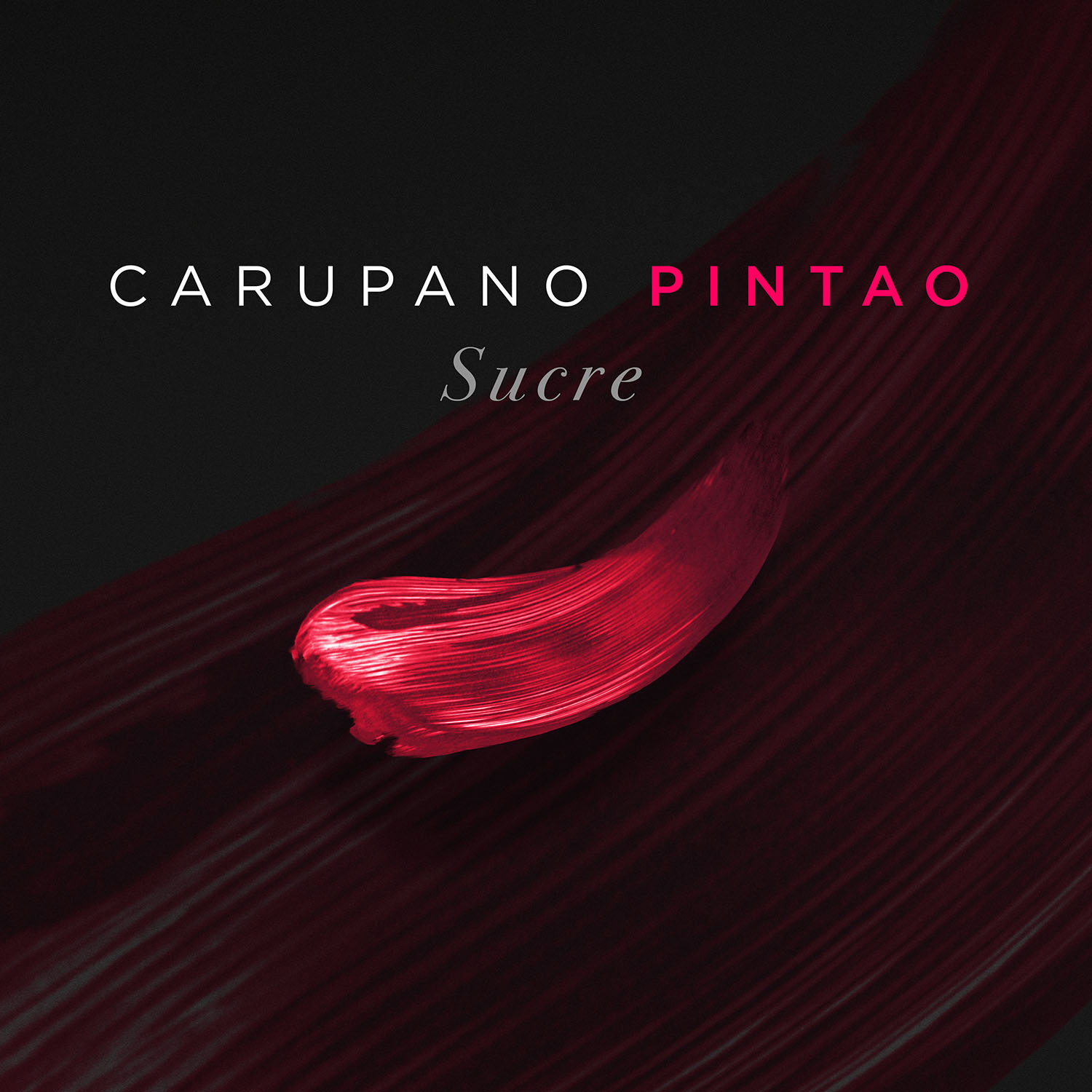

EVALUATION .................................................................. 2.9 
SWEET FRUITY .................................................................. 2.4
CITRIUS FRUITY .................................................................. 1.3
FLORAL.................................................................. 0.8
ACRIOLLADO .................................................................. 2.1
CACAO .................................................................. 4.0
FOREST .................................................................. 0.4
SPICES .................................................................. 0.1
ANNUAL PRODUCTION (TM) .................................................................. 50
MAIN CROP .................................................................. OCT-FEB
MID CROP .................................................................. MAY-AUG
CRIOLLO BEANS .................................................................. 14%
FERMENTED BEANS .................................................................. 82%
PURPLE BEANS .................................................................. 14%
SLATY BEANS .................................................................. 4%
TOTAL .................................................................. 100%
Beans / 100 g.: .................................................................. 89
g./1 Bean: .................................................................. 1,14 g
CERTIFICATION .................................................................. NO
AWARDS .................................................................. NO
Raisins
Fruits des bois rouge confit
Panela • Céréales
Cacao
Clous de Girofle • Baie rose
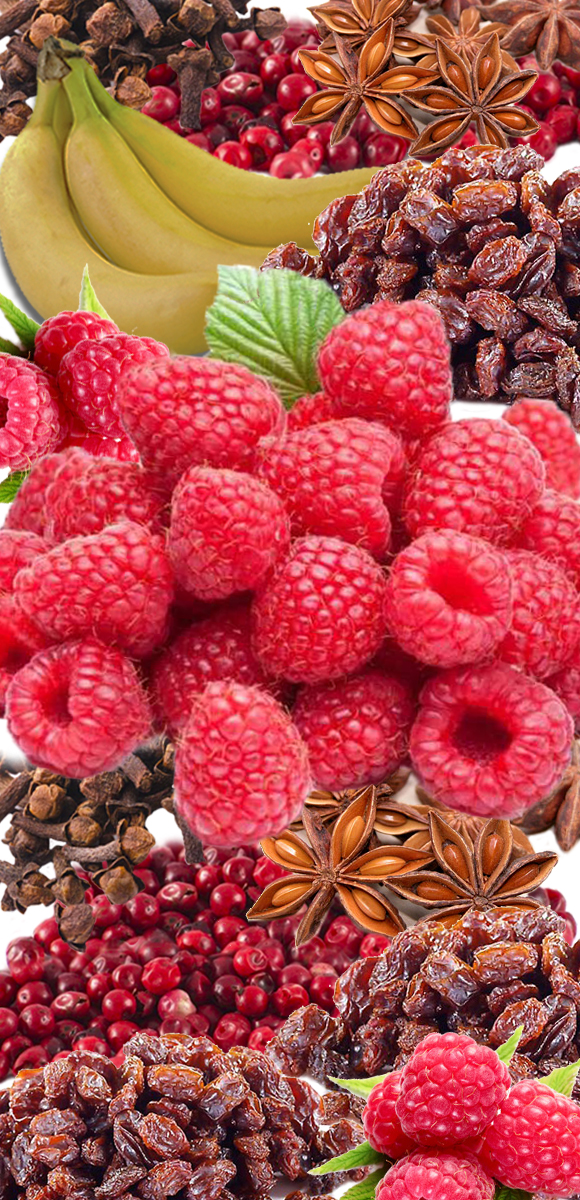
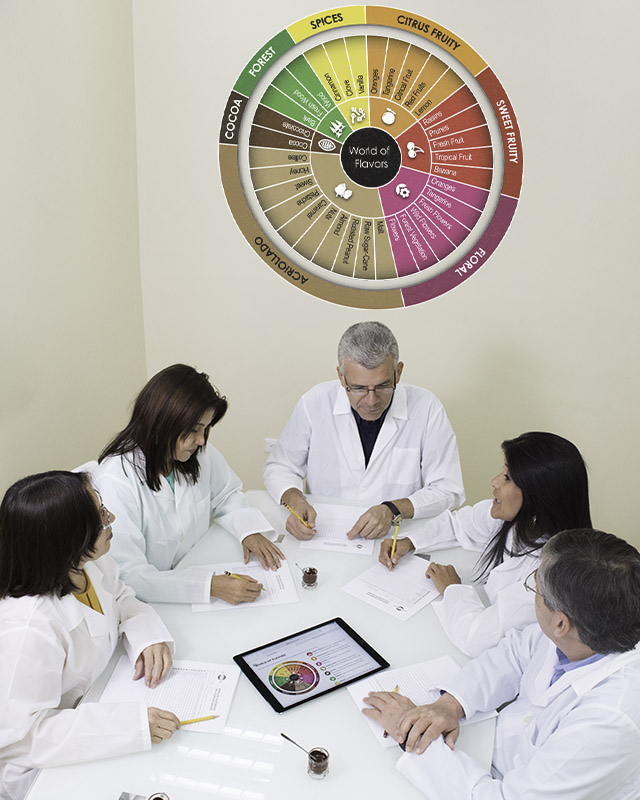
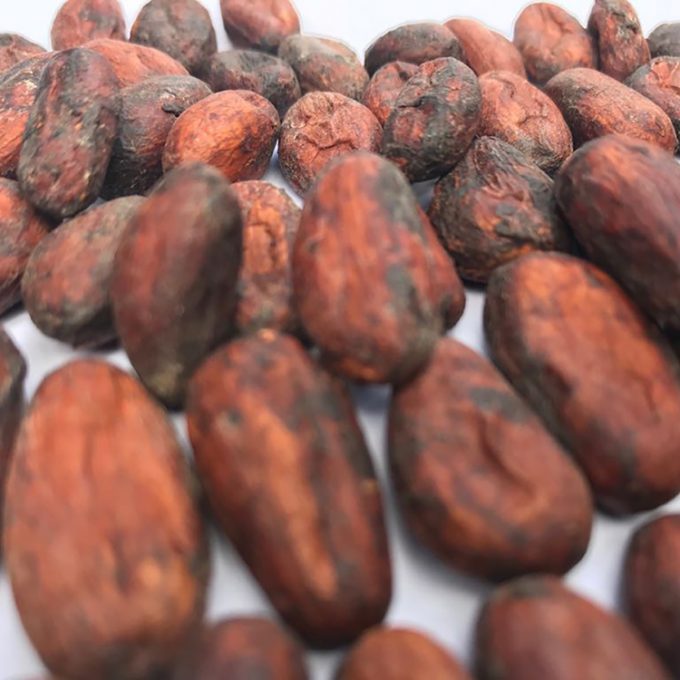
Carúpano Pintao reveals up to 14% of white cacao beans due to its high criollo and trinitario genetics. This mixture of genes is what provides its exotic flavors.
The cut test analysis shows fermented beans (± 82%), purple beans (± 14%), and slaty beans (±4%).
Each pod contains around 89 almonds sized cacao beans, weighing about 1.14 gr each.
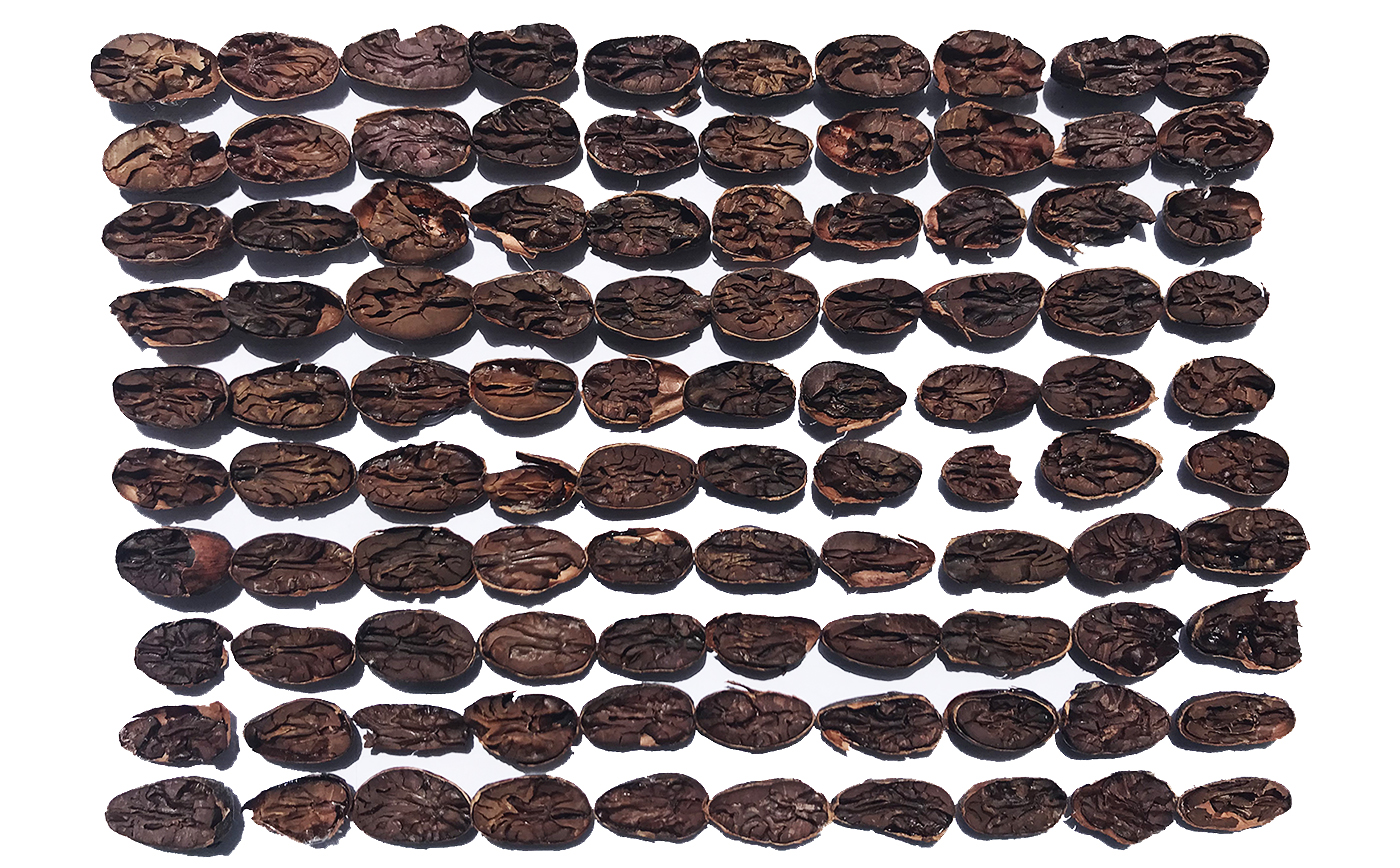
This special cacao possess unique and interesting flavors of framboise, banana, raisins, noisettes and spicy touch of poivre rosé.

This cacao has particular fruity and acriollado notes. It’s perfect post-harvest process gives a cacao that results with low astringency, sour and bitterness.
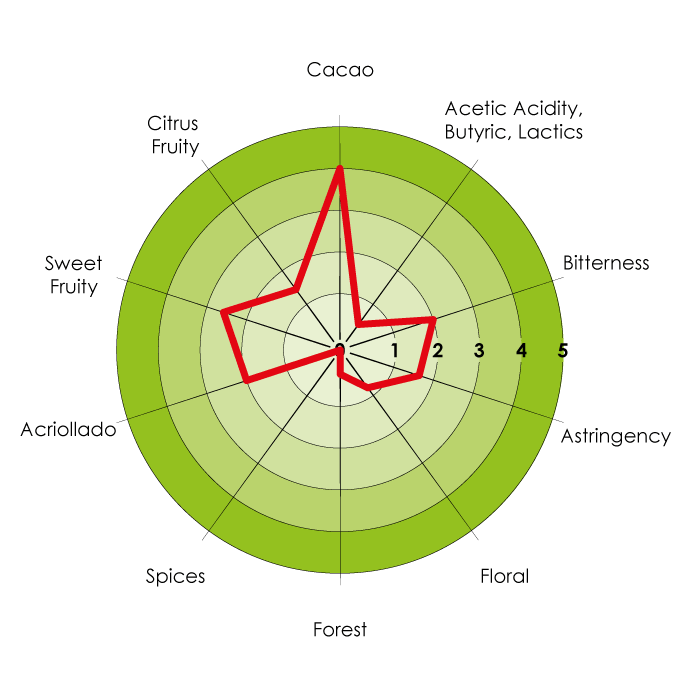
Farmers from "La Concepción” in Río Caribe start their harvest by selecting pods or “maracas” from the trees, and pick amongst them those that are not damaged, diseased or overripe. The pods are cut down from the trunk and branches very carefully with a machete or with a “lata” (bamboo cane). After the wet beans have been separated from the pods, they are transported by donkeys toward the fermentation and drying facilities.
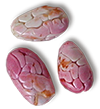 Trinitary &
Trinitary & Criollo
Criollo
Box type: Wood
Turn-around frequency:
1st Turning: 24 hours.
2nd Turning: 48 hours.
3rd Turning: 48 hours.
4th Turning: 48 hours.
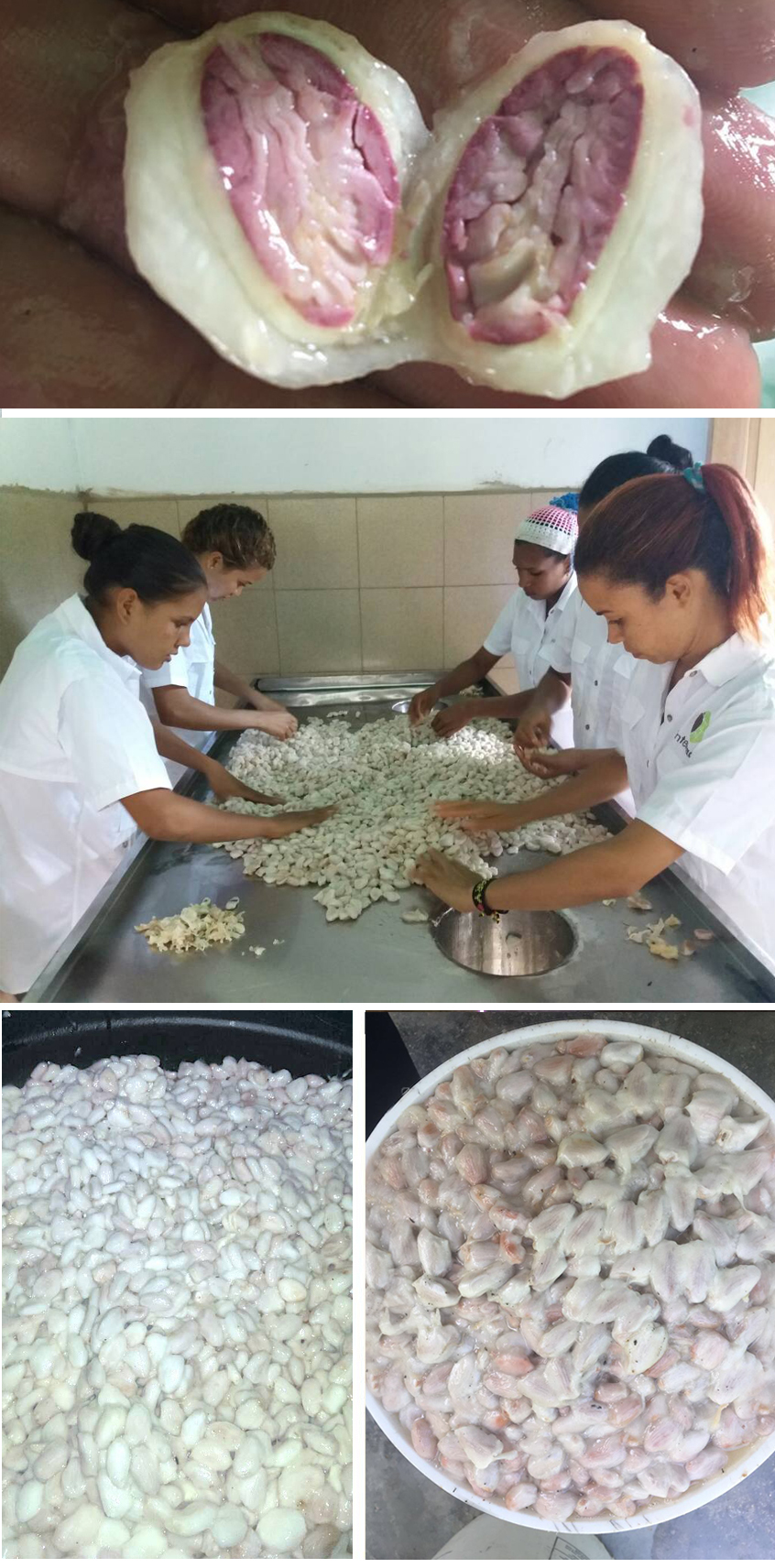
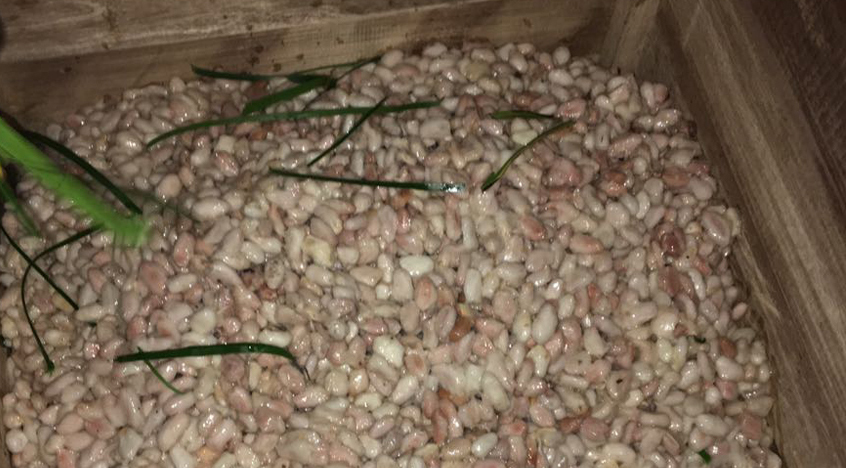
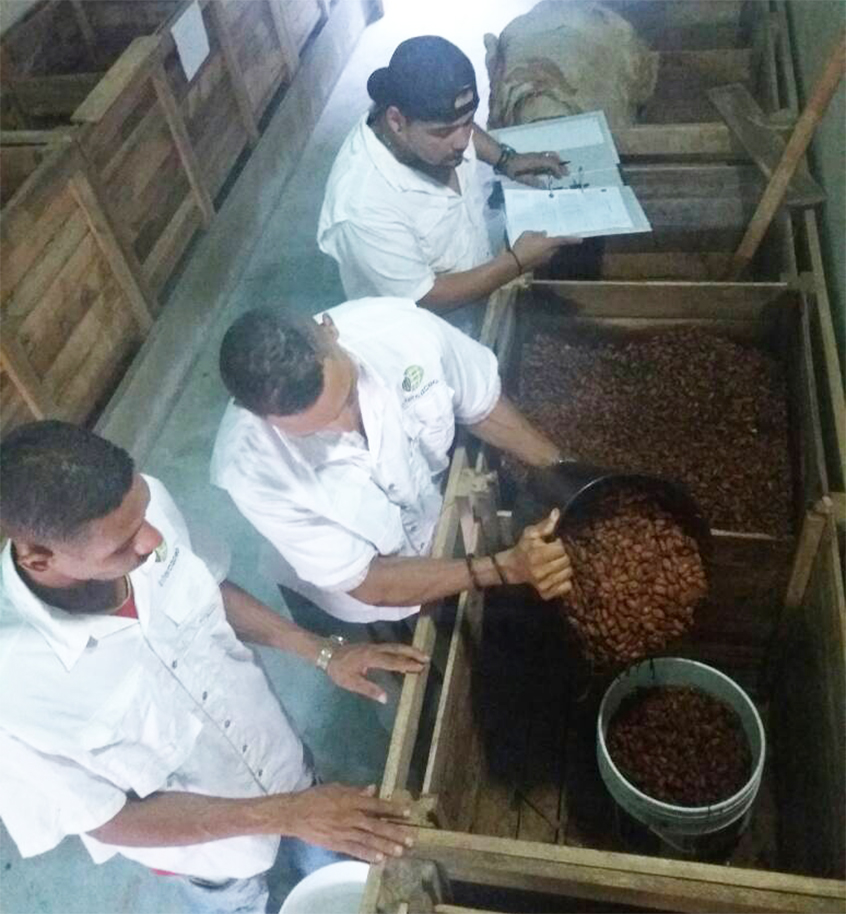
The selected cacao beans are placed into wooden boxes of three compartments and covered with banana leaves. The turning is done manually with a wooden shovel by moving the wet seeds from one box to another; their temperature is measured daily (42 °c - 55°c). A representative cut of the beans is made to visually verify the progress of the fermentation.
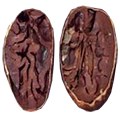 Trinitary &
Trinitary & 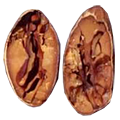 Criollo
Criollo
Floor type: wooden bed.
Humidity: 8%.
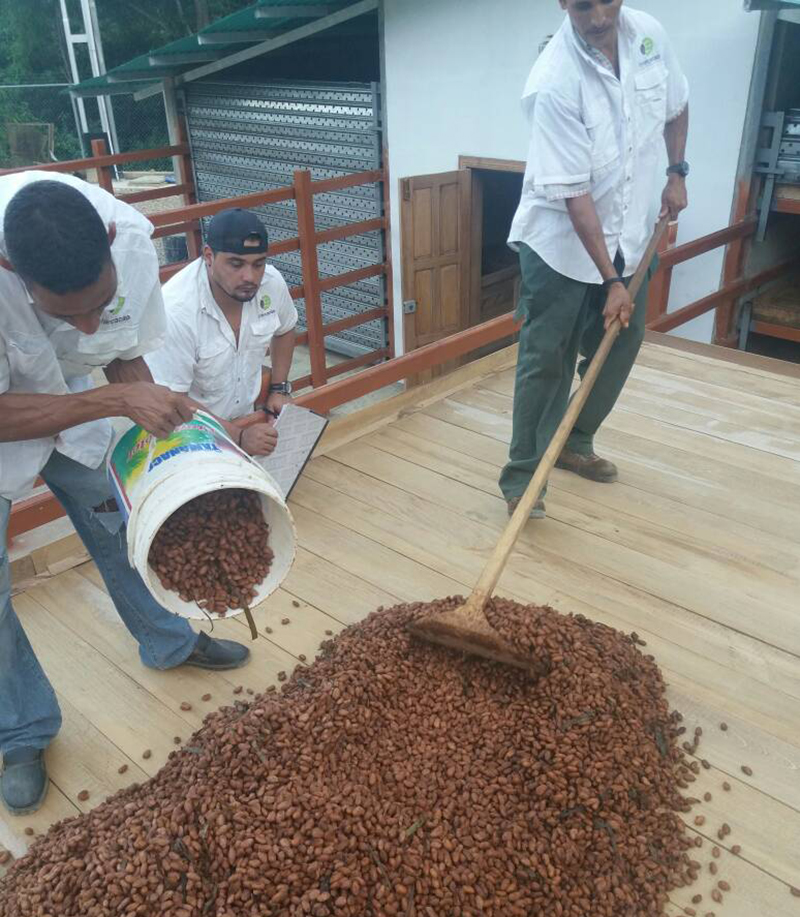
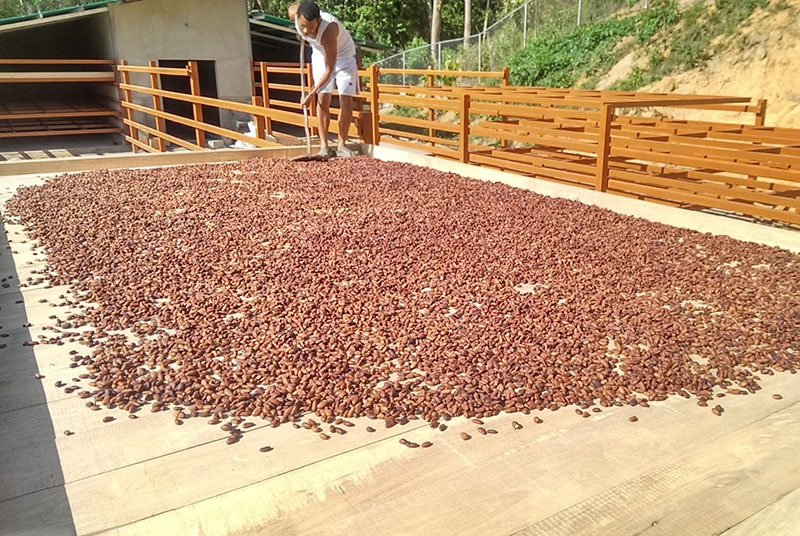
The drying process starts with spreading the wet cacao beans on wooden beds. The rotation and removal of the beans is done with wooden rakes every thirty minutes, the cacao beans are exposed uniformly to the solar radiation. The drying process takes five days to complete, with turnings every half an hour during the hours allotted for the drying protocol.
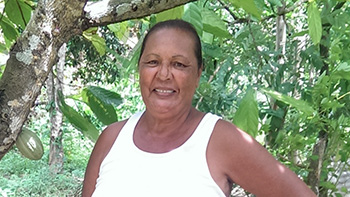
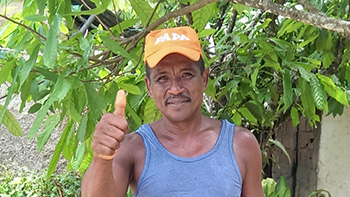
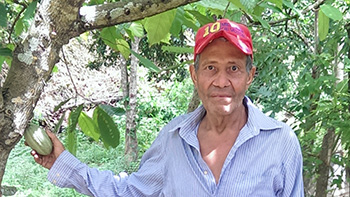
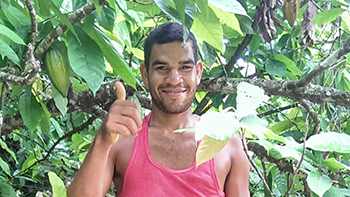
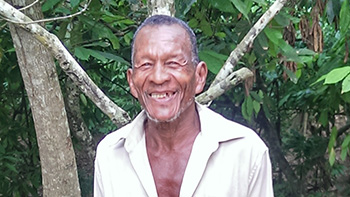
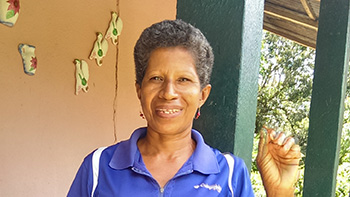
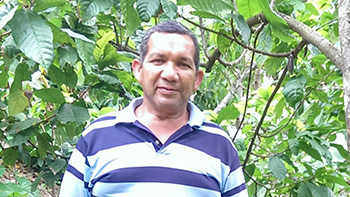
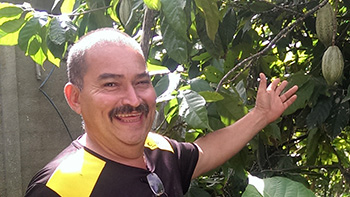
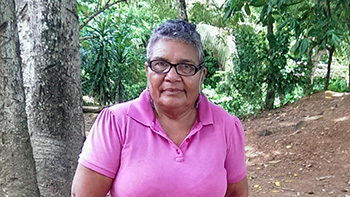
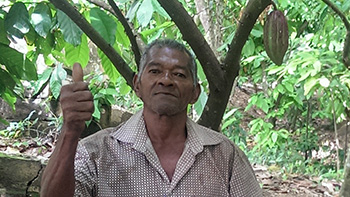
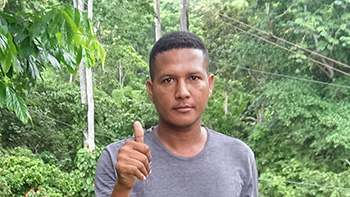
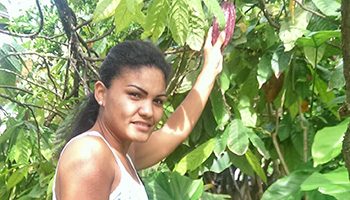
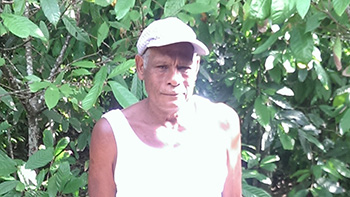
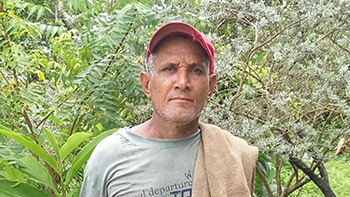
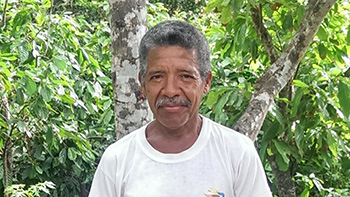
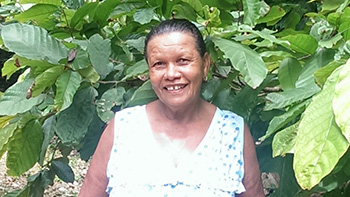
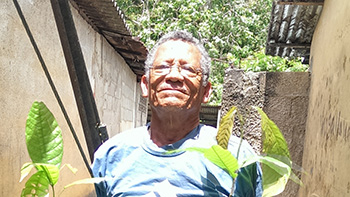
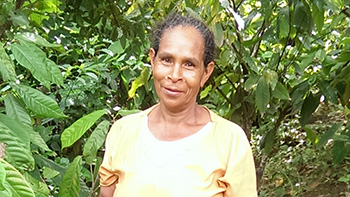
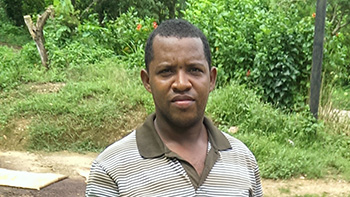
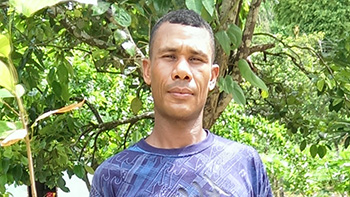
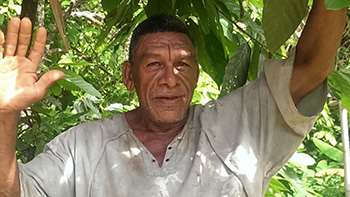
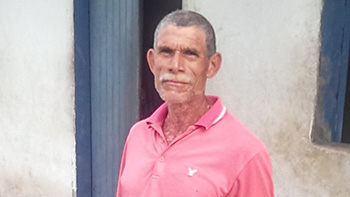
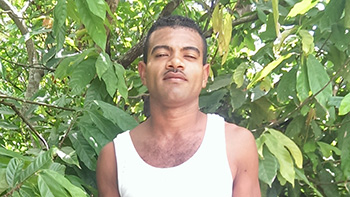
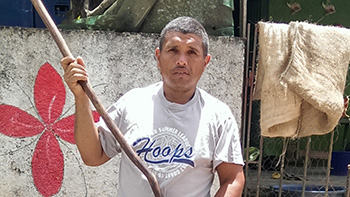
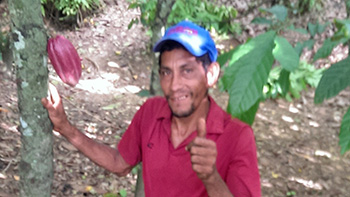
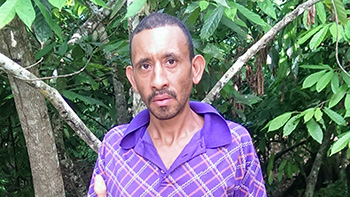
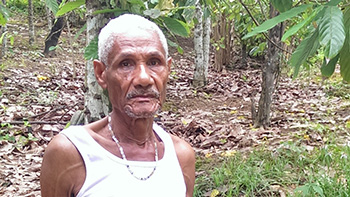
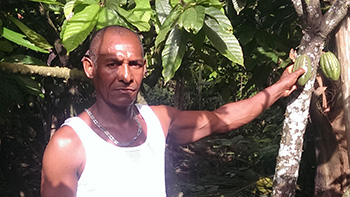
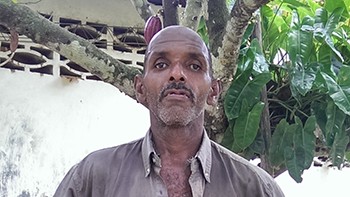
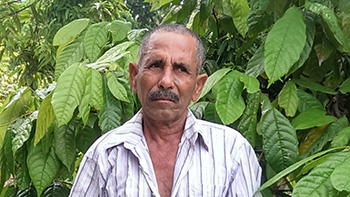
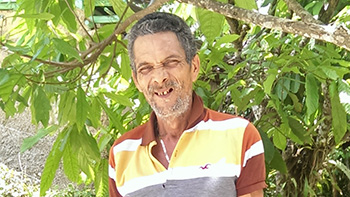
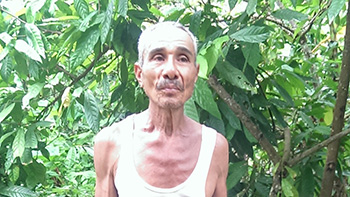
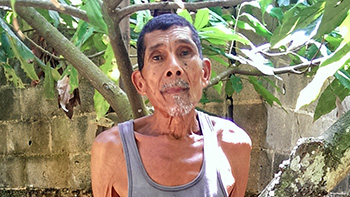
Cacao beans from Río Caribe "La Concepción” are called Carúpano Pintao because people from this place used to paint cacao pods with red clay to avoid insects.
People from Río Caribe "La Concepción" live in humble houses made of red bricks. Their environment is quiet, friendly and pleasant. The children of the area usually surround tourist’s arrival with happiness and enthusiasm. Besides the agricultural work in their farms, producers enjoy the shade of trees and fruits available in their plantations. They are persevering and determined people, used to work every day from early morning.
Agroparia Post Harvest Facility Center in La Concepción, Río Caribe, is integrated by a team of ten cacao experts, following strict processes previously evaluated by agricultural engineers, with compromise, care and dedication, and focused toward the improvement and evolution of the valuable cacao bean. Our facility receives wet cacao beans from 80 farmers, with an annual cacao production of 50.000 kg (150.000 kg wet beans max) per year. The main production is from October to January and the medium one in the months of March and June
Its main economic activity is agriculture. Most farmers cultivate cacao, an activity where the whole family participates, each individual collaborating in each one of the stages of this process; women join their domestic tasks with the works of cacao and men take care of harvesting and transporting of cacao beans to "La Concepción" central facility.
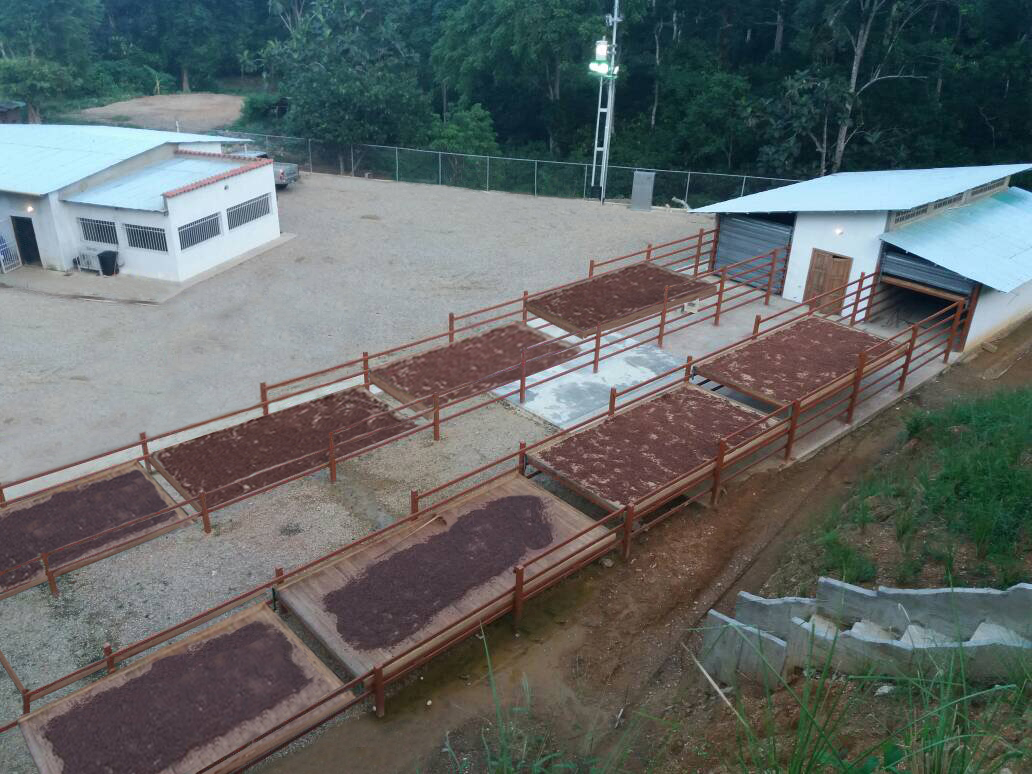
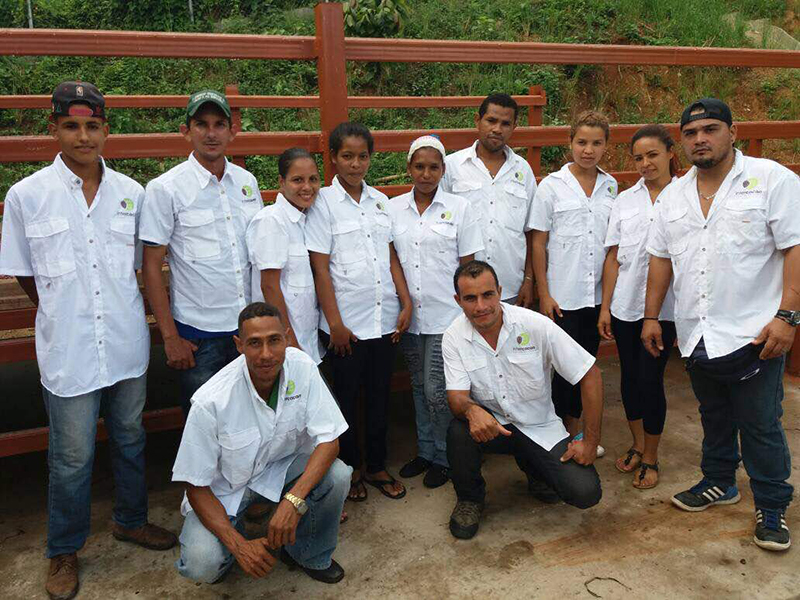
Río Caribe is located in the eastern coast of Venezuela, specifically in the North of the Paria Peninsula, in the Arismendi Municipality, Sucre state. It borders: North with the Río Santiago community; South with Platanito community, East with La Concepción and West with El Queremene community.
The flora includes wild orchids and canna indicas. Fauna we commonly see Lapa, Cachicamo (variety of armadillo) and Guaipaco. Birds like Guacharacas, palomino, tutuer, picue, tortolita (turtledove) and tocucha.
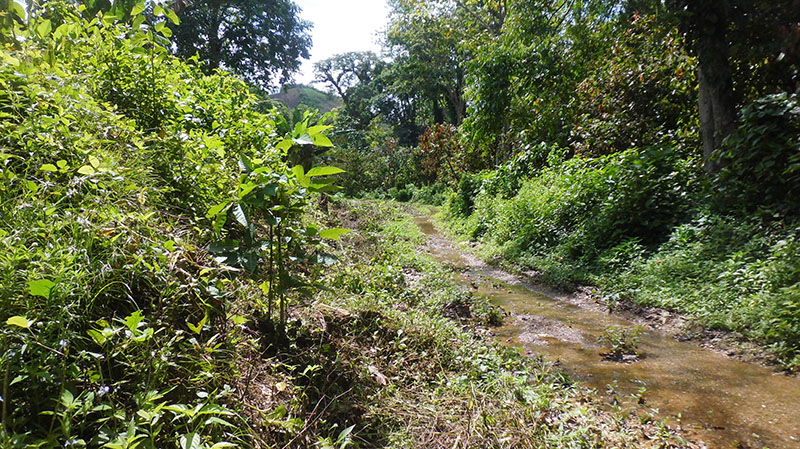
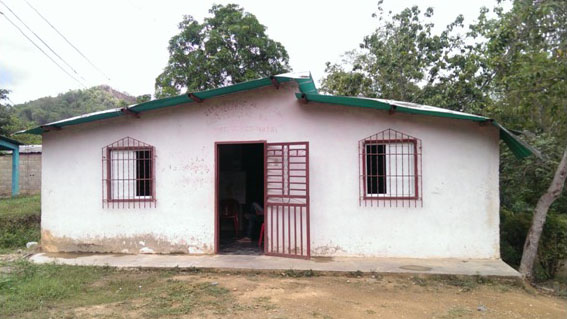
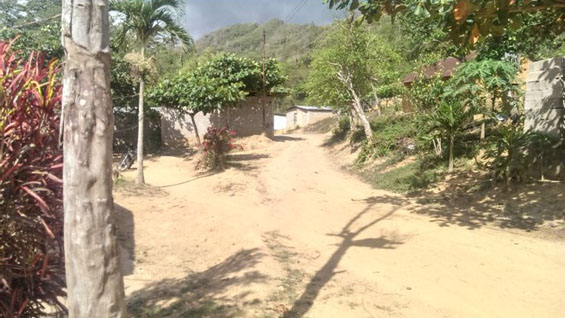
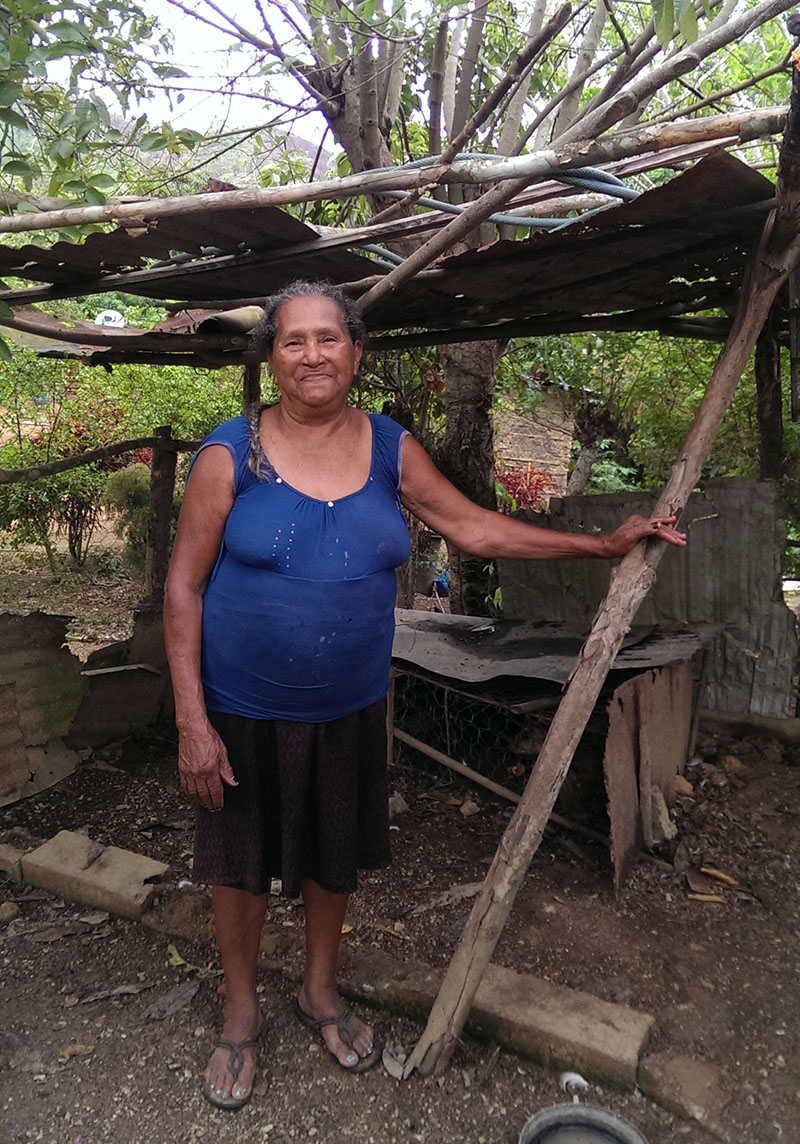
The Corsican hold in the region of Paria, in Sucre state in Venezuela, begins at the last part of the eighteenth century, when there was a tendency to populate the nearby islands, like Puerto Rico, Martinica, Guadalupe, Trinidad, Tobago and Grenada. Due to the necessity to stock different supplies (wood, tobacco, food, beef cattle, etc.) available in Paria, they started their own economy with the cultivation of sugar cane, coffee and cacao, taking advantage of the accessibility to the peninsula through Río Caribe, Güiria or Carúpano, which were commercial ports already.
This is how many French immigrants of Corsican origins, like the Oletta, Morandi, Lucca, Franceschi, Prosperi, Grisanti, Paván, Luigi, Pietri, Padovani, Cipriani and Giusti families amongst others, arrived and settled in this particular region of Sucre state, where they built their honorable homes. They were examples of generous sentiment, consecration to work and a will to prosper in all their manifestations, which nowadays are still palpable in their homestead places like Carúpano, Río Caribe, El Pilar, Yaguaraparo, Irapa, Güiria, Cariaco and La Concepción. Along with this heyday occurred an improvement of the technique of cacao cultivation, increasing sensibly the production levels.
“La Concepción” was founded in 1816, with people from the communities of Los Platanitos and Queremene. The name “La Concepción” stands for the hope of their founders of a new beginning in this place.
Today’s people keep their traditional customs, like the Sancocho de pescado, (a very tasty fish stew) made principally with bagrefish, complemented with assorted vegetables, and a hot and toasted cassava. Their folk stories are entertaining ,colorful and full of mystery, with wise learnings always ending in happiness
For celebrations and family or social meetings, they prepare their famous drink called El Cacaíto, made of Ron Paujil, roasted cacao beans (and may include cacao in flesh), with sweet spices like cinnamon, guayabilla, cloves and sugar, which is mixed and left to macerate for about one week in order to allow every ingredient to concentrate and complement each other.
SOCIAL RESPONSIBILITY
Improvement of the Electrical Layout of the La Concepción Community
Date: June 2nd, 2017.
Location: La Concepción Processing Central.
Facilitators: Pino, Estefany; Vallenilla, Graciela; González. Claudia.
The Prosperi foundation, with their facilitators, carried out an educational talk to La Concepción community in order to explain the importance of the improvement of the electric layout and its influence in their life conditions quality.
Characual High School and La Concepción School Elementary
Program “Regreso al Agro”, La Concepción School.
Date: July 9th 2017 Colegio Caraquita
Date: May 30th 2017 Liceo Guara 1
Date: March 30th and May 17th, 2017.
Date: March 9th and 10th, 2017.
Location: Rio Caribe, Sucre State.
Facilitator: Pino, Estefany and González ,Claudia
The Prosperi foundation, with their facilitator, carried out various educational talks regarding the “Regreso al Agro” program to an audience of elementary school students and secundary of La Concepción School, where they exposed the fundamental subjects of the program, which are: History of the Cacao, Cacao Harvest and Post Harvest, and How to Make our Agriculture Productive and Sustainable.
In those educational talks they explained the main objectives and functions of the Foundation and the “Regreso al Agro” program, cacao’s history, from its origin, existent varieties, historical antecedents, steps to be followed for a proper post harvest handling, proper implements for the harvesting process, steps for an effective fermentation of the cacao, climatic situations to be considered for fermentation, how to carry a responsible, sustainable and profitable cacao agriculture.
Fight against Malaria in La Concepción Community
Date: December 12th and 16th, 2017
Due to the high number of malaria cases in this community, The Proposperi Foundation in collaboration with Intercacao, carried out fumigation to rid area of mosquitos as part of malaria control.